How To Use Hair Butter To Protect Your Hair + Easy DIY Recipe
Use this creamy product in a variety of ways to get moisturized and luscious locks!
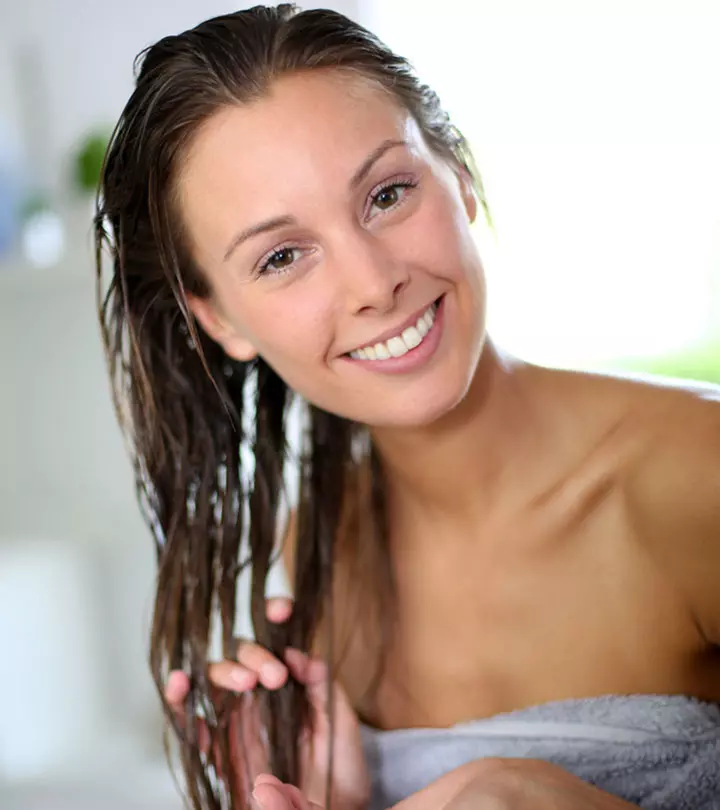
Image: Shutterstock
Hair butter is the ultimate remedy to dull, dry, and damaged hair. It helps restore moisture and keep coarse and brittle hair soft, healthy, frizz-free, and beautiful.
The moisturizing properties of a rich hair butter lock in moisture to your tresses and guard against breakage. It is usually made of natural oils and other hydrating agents and works well for natural and over-processed hair. The best part is – you can prepare hair butter at home. Keep reading to learn how to prepare hair butter and the right way to use it.
In This Article
What Is Hair Butter? How Does It Work?

Hair butter is a moisturizer for your hair and contains a blend of unprocessed natural oils and fats derived from plants (also referred to as butters). The most common plant oils/fats used to prepare hair butter are kokum, cocoa, mango, murumuru, sal or shorea, tucuma, and shea butter. These are mixed with natural oils like coconut, hemp seed, castor, almond, and avocado oil.
This rich and hydrating blend of ingredients deeply nourishes and moisturizes your hair, reduces dryness and frizz, and prevents breakage. Hair butter is especially beneficial for natural hair and is used during protective styling to keep the strands nourished for days. Hair butter is also good for damaged and over processed hair that demands intense moisturizing.
Goody, a blogger, shared her personal experience of using a DIY hair butter in her blog post. She said,“I decided to try my luck at making something else. Last week, I made a hair butter and it left my hair feeling soft even up to now (i).”
Here is an easy recipe if you are wondering how to make hair butter for natural and damaged hair at home.
Key Takeaways
- Hair butter is a moisturizer made from cocoa, mango, coconut oil, or avocado oil.
- It decreases dryness and keeps your hair moisturized when used as a hair mask or a leave-in conditioner.
- You can make your hair butter at home with a few organic ingredients and a hand blender.
- Anyone with coarse, dry, or damaged hair can use hair butter as part of their haircare routine.
- The difference between hair butter and body butter is that the former contains ingredients that hydrate your hair, while the latter uses ingredients that nourish and boost your skin health.
Easy DIY Hair Butter Recipe
It is easy to come up with your homemade hair butter:
 Quick Tip
Quick TipIngredients To Use
- 1 ½ cups of shea butter (you may use cocoa, mango, or kokum butters)
- 2 tablespoons of hemp seed oil
- 2 tablespoons of coconut oil
- 2 tablespoons of castor oil
- 5-6 drops of any essential oil (like lavender, peppermint, rosemary oils)
- Mixing bowl
- Hand blender
- A glass storage jar with a lid (clean and dry)
Procedure
- Bring the shea butter to room temperature before you start.
- Put the shea butter in the mixing bowl and add the rest of the ingredients.
- Mix all the ingredients with the hand blender until it looks like whipped cream.
- Transfer the whipped hair butter to the storage jar.
- Store it in a cool and dry place. Do not refrigerate.
 Quick Tip
Quick TipYou can apply this hair butter to dry and damp hair. Here is how to use it.
How To Use Hair Butter
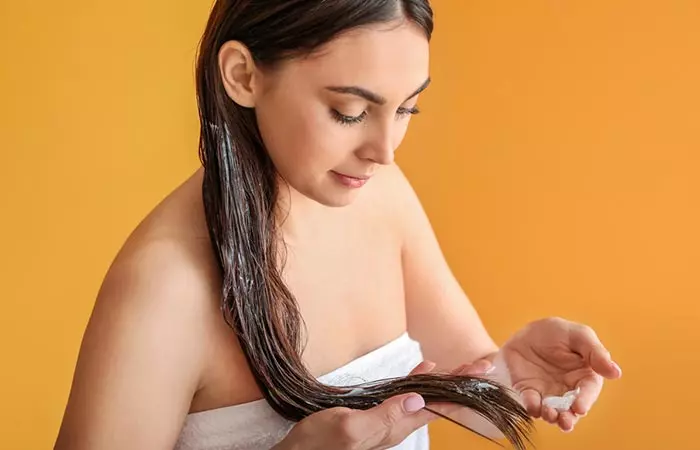
- As A Hair Mask
- Wash your hair with a clarifying shampoo. Rinse well.
- Apply a leave-in conditioner or any hair oil.
- Apply a dollop of the hair butter to the damp strands and scalp. Massage well.
- Leave it on for an hour and wash (for dry hair).
- If you have damaged and curly hair, leave on the mask overnight and wash off the next day.
 Fun Fact
Fun Fact- As A Leave-In Conditioner
- Rub a pea-sized amount of the hair butter between your palms.
- Apply to your dry or damp hair from mid-length to the hair ends.
- Do not wash. Style your hair.
- As Pre-Conditioner
- Apply hair butter to your dry or damp hair. Focus on the hair ends.
- Leave the butter on for an hour.
- Wash off with a mild shampoo.
Here are a few dos and don’ts you need to keep in mind while using natural hair butter.
Dos And Don’ts Of Using Hair Butter
Dos
- Apply hair butter only to clean hair. Using hair butter on dirty hair may cause buildup and lead to hair fall.
- Before applying hair butter, wash your hair with lukewarm water to open up the cuticles. This allows for better absorption.
- Use hair butter on damp or moist hair to maximize its hydrating effects.
- Pay attention to the problem areas of your hair. While applying hair butter, focus on the hair ends as they are far from the scalp and lack natural oils.
Don’ts
- Do not reapply hair butter unless you have washed off the residue from your previous application.
- Do not use hair butter excessively as it can weigh your hair down.
- Do not combine your hair butter with other hair products like mousses and gels. This may cause buildup and greasiness.
- Do not mix natural hair butter with chemical products and ingredients. This may reduce the efficacy of the butter.
Hair butter provides intensive deep conditioning. It is a thick product with a creamy texture and is better suited for people with highly porous hair.
Who Should Use Hair Butter?
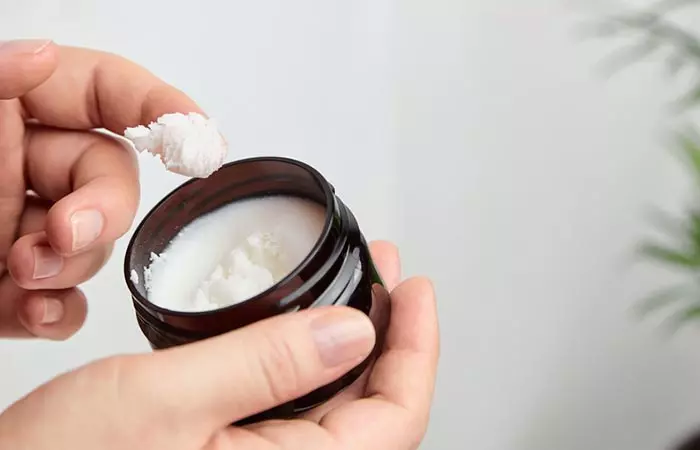
You can use hair butter if:
- you have high porosity hair
- you have curly and wavy hair
- your hair is thick and coarse
- your hair breaks easily and is dry
- your hair is damaged and has split ends
- your hair is frizzy
- you need to maintain a protective hairstyle
Hair and body butters may appear similar, but there is a subtle difference between the two. If you are confused between both type of butters, scroll down to the next section.
Hair Butter And Body Butter: What Is The Difference?
Both hair and body butters are oil-based formulations. The only difference lies in the choice of oils for both products. Hair butter contains oils that are beneficial for the scalp and hair, while body butter contains carrier oils such as argan oil and jojoba oil that work best for the skin.
Also, hair butter tends to be greasier than body butter. That is why skin butter recipes often include tapioca powder or an emulsifier to reduce the greasiness. In the following sections, we have answered a few questions that you may have regarding hair butter.
Do You Need A Preservative In Hair Butter?
No. Natural hair butter recipes do not need preservatives. You may prepare it in small batches and store the butter in a clean and dry jar. Keep it away from moisture to prevent bacterial and fungal growth.
Do You Have To Wash Out Hair Butter?
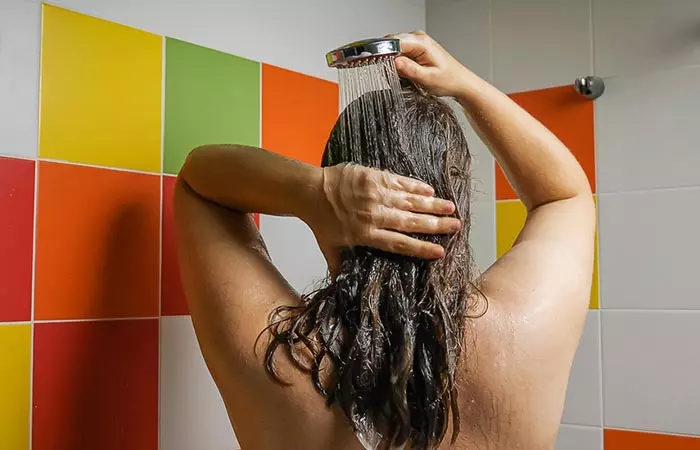
Yes. You may wash it off after a few hours or the next day of application to prevent buildup and greasiness. For natural hair, you may leave it on until the next hair wash.
Does Hair Butter Promote Hair Growth?
There is no clinical evidence to prove that hair butter promotes hair growth. However, hair butter can moisturize your locks, prevent damage and breakage, and help maintain your hair health.
Which Butter Is Best For Hair?
You may use shea, murumuru, kokum, aloe, tucuma, cupuacu, or mango butter for your hair as they can all hydrate and soften your hair.
While hair butters have recently gained popularity, hair oils have always been the top choice. But there are still some aspects in which hair butters top hair oils. Read on to learn which one would be a more ideal option for you.
Hair Butter Vs. Hair Oil
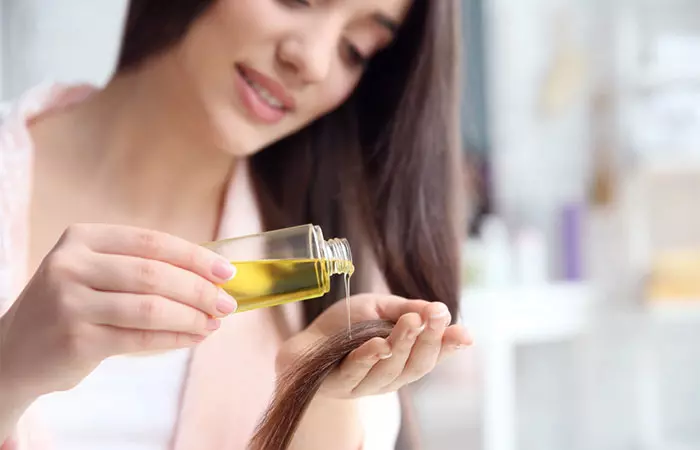
Hair butters are rich in saturated fats that make them more effective in penetrating the hair follicles, while hair oils contain high levels of polyunsaturated fats that make them less permeable. Hair oils help retain moisture in the strands, which in return reduces frizziness and hair breakage and thus can be recommended for curly and fine hair. Hair butters, on the other hand, help with deeply nourishing the hair and combat dryness, which can make it a suitable choice for kinky and dry tresses.
However, hair butters are heavier than hair oils and may cause buildup. Therefore, when it’s about hair butters, a little goes a long way.
Infographic: When Should You Use Hair Butter
Hair butter is a hydrating moisturizer made from natural oils and unprocessed butter that adds to the beauty and shields your hair from damage and breakage. This type of butter is a blend of natural butter (such as cocoa butter or shea butter) and oils (for example, coconut oil, castor oil, etc.). Check out the infographic below to learn when you should use hair butter. Illustration: StyleCraze Design Team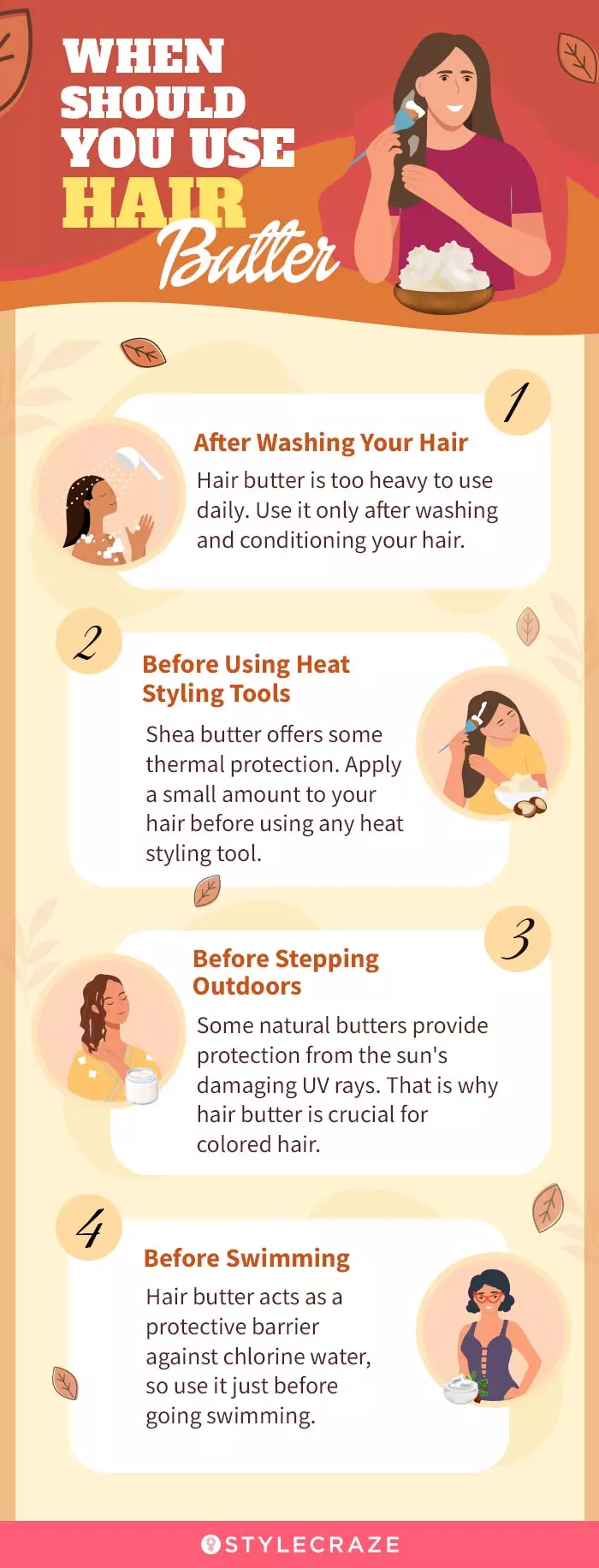
Hair butter effectively manages dry, damaged, and dull hair and is a boon for efficient hair care. Hair butter is a blend of unprocessed natural oil and plant fats. These will help in deep moisturizing and nourishing the hair. You can prepare hair butter easily at home with simple ingredients. You can use it as a hair mask, leave-in conditioner, or pre-conditioner. However, you should apply hair butter on clean hair, and the hair ends where there is a lack of natural oils. Excess application should be avoided, and it should not be mixed with other hair products.
Frequently Asked Questions
What is the difference between hair butter and hair cream?
The key difference between hair butter and hair cream is that while hair butter has an oil base, hair cream has a water base. Hair creams prevent the loss of moisture and help in styling and giving definition to your hair. Hair butter locks the moisture in your hair.
What butters are good for low-porosity hair?
You need moisture-rich natural butter for low-porosity hair. You can use avocado, pistachio, murumuru, or cupuacu butter for hair with low porosity.
What butter is good for 4c hair?
Type 4c hair has the tightest curl pattern of all hair types. Unrefined shea butter is highly recommended for this hair type.
Can you use shea butter on high-porosity hair?
Yes. You can use shea butter for hair that has high porosity, as it is a good moisture sealant, and creates a thick barrier around the hair strands to lock the moisture in.
Illustration: How To Use Hair Butter To Protect Your Hair + Easy DIY Recipe
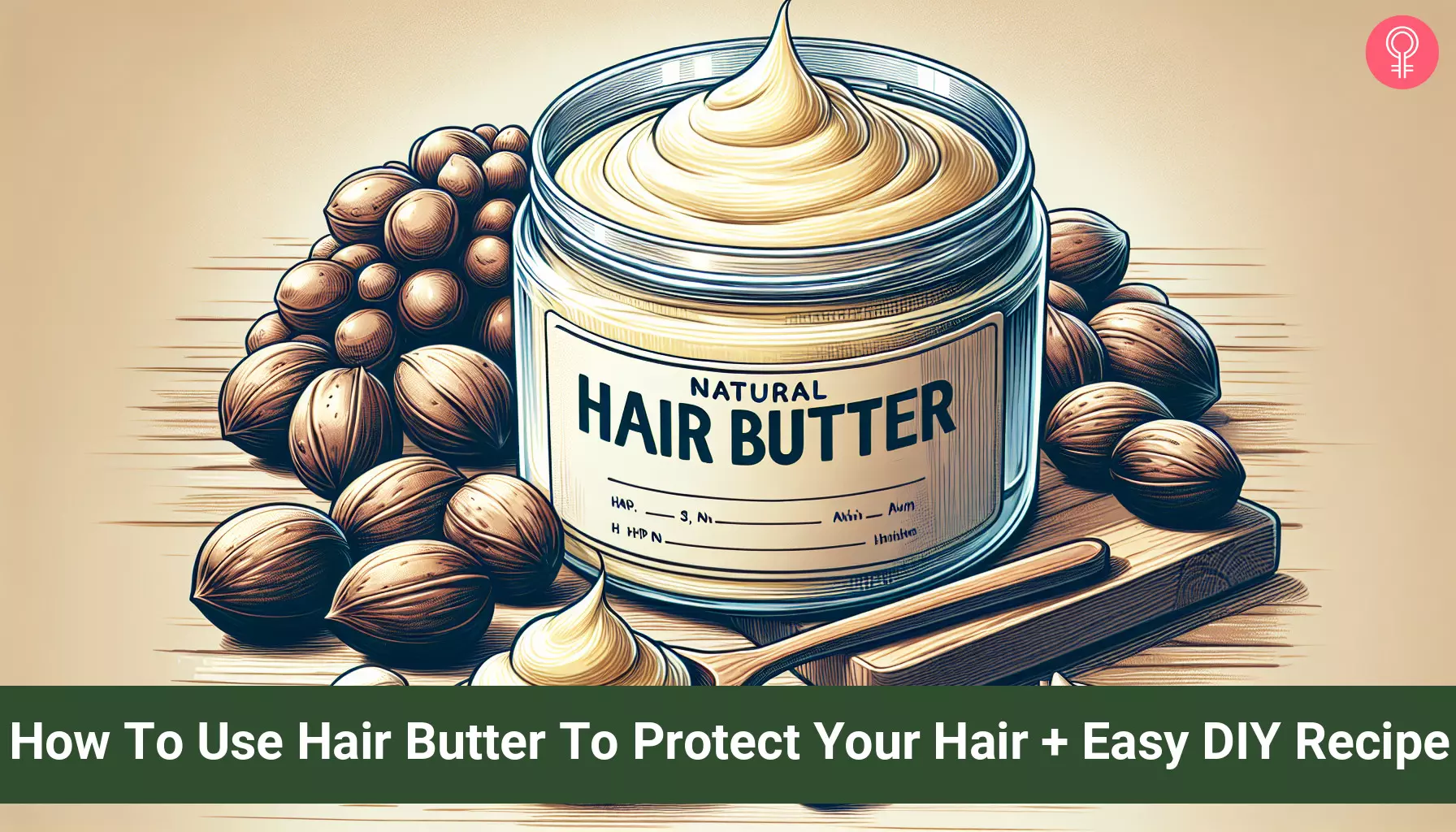
Image: Dall·E/StyleCraze Design Team
Learn how to make your own herbal hair butter and cream with this easy tutorial! Get ready to nourish and protect your hair with natural ingredients.
Personal Experience: Source
StyleCraze's articles are interwoven with authentic personal narratives that provide depth and resonance to our content. Below are the sources of the personal accounts referenced in this article.
i. How to Make Hair Butterhttps://goodyonabudget.wordpress.com/2020/05/08/how-to-make-hair-butter/
Read full bio of Ghanima Abdullah
Read full bio of Ramona Sinha
Read full bio of Eshna Das
Read full bio of Swathi E










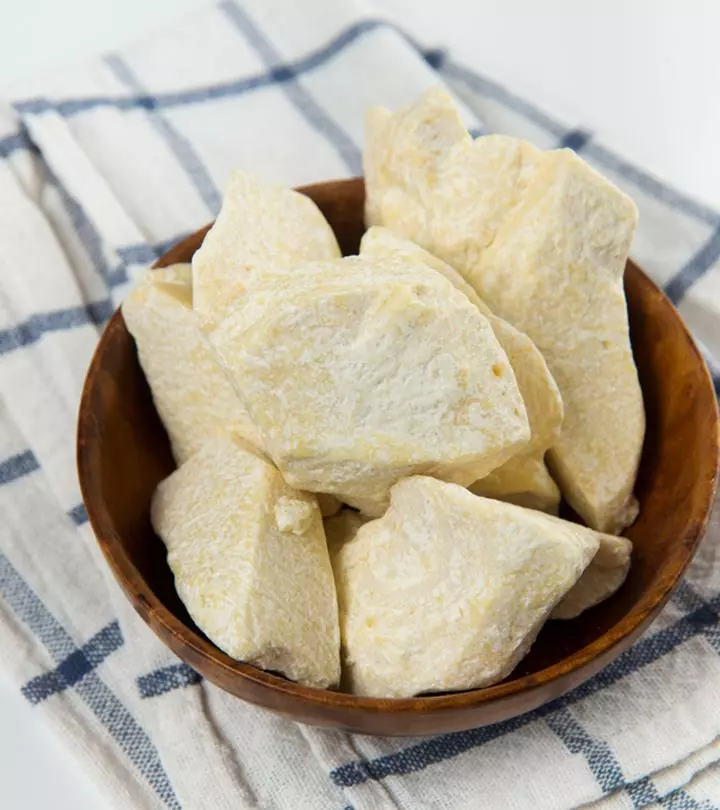

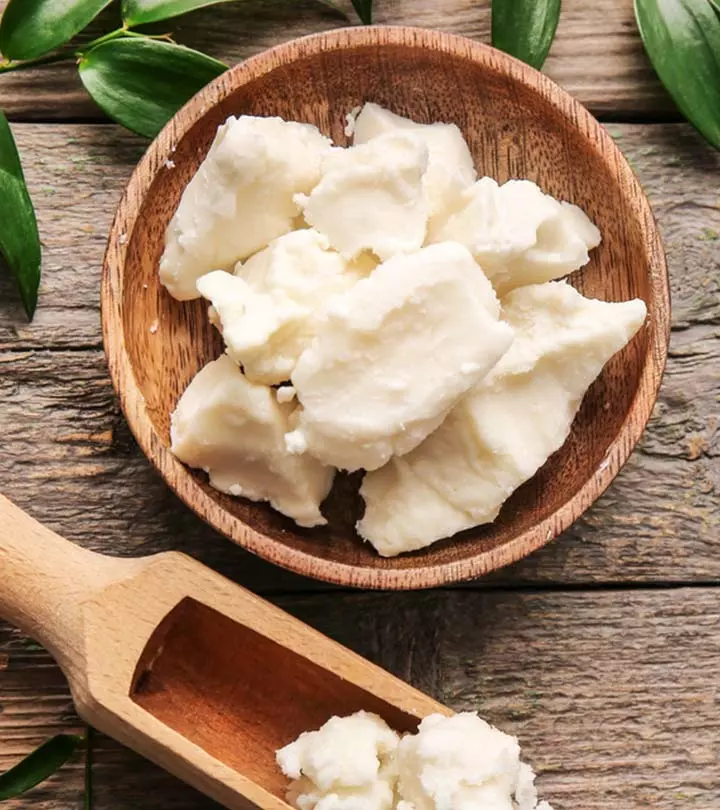
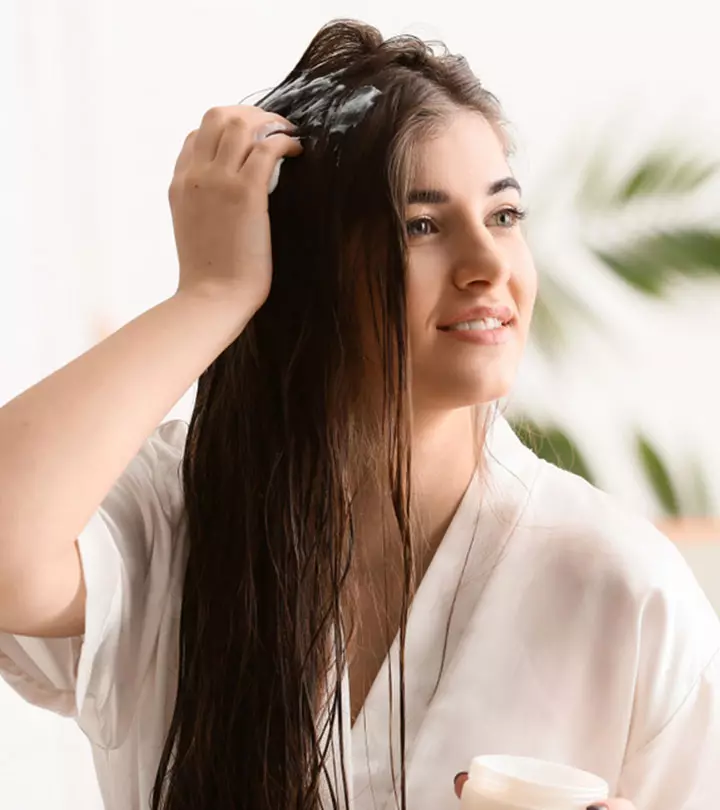
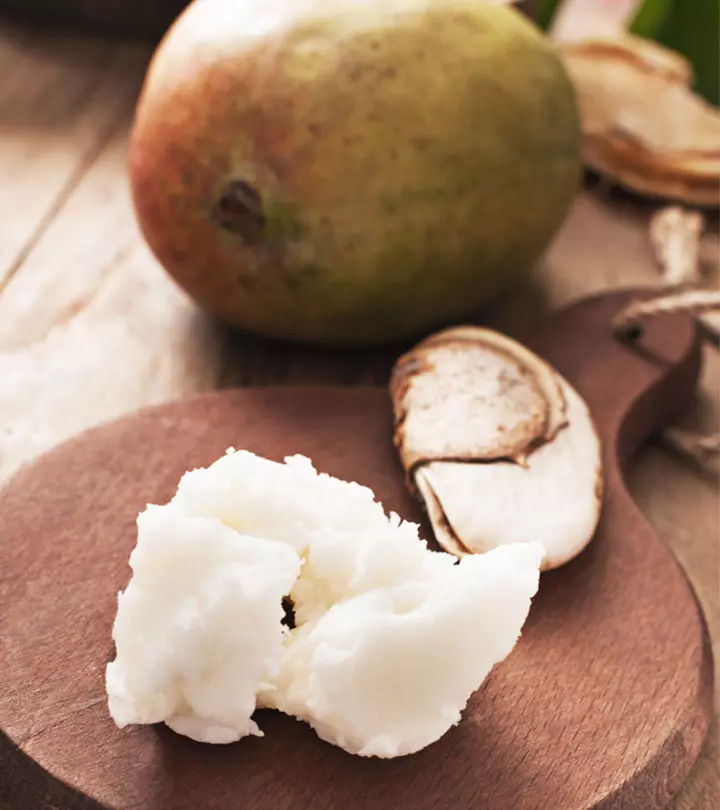
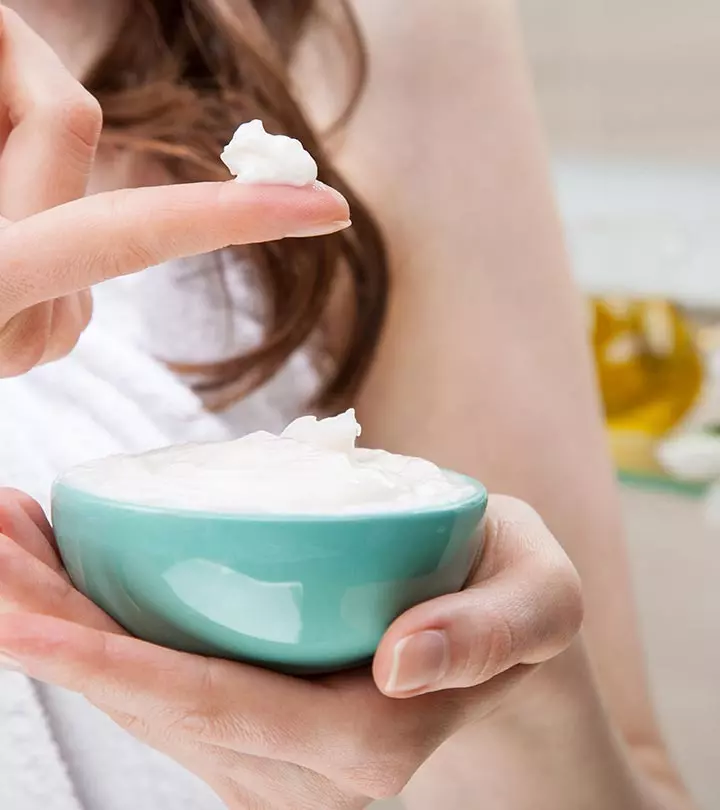
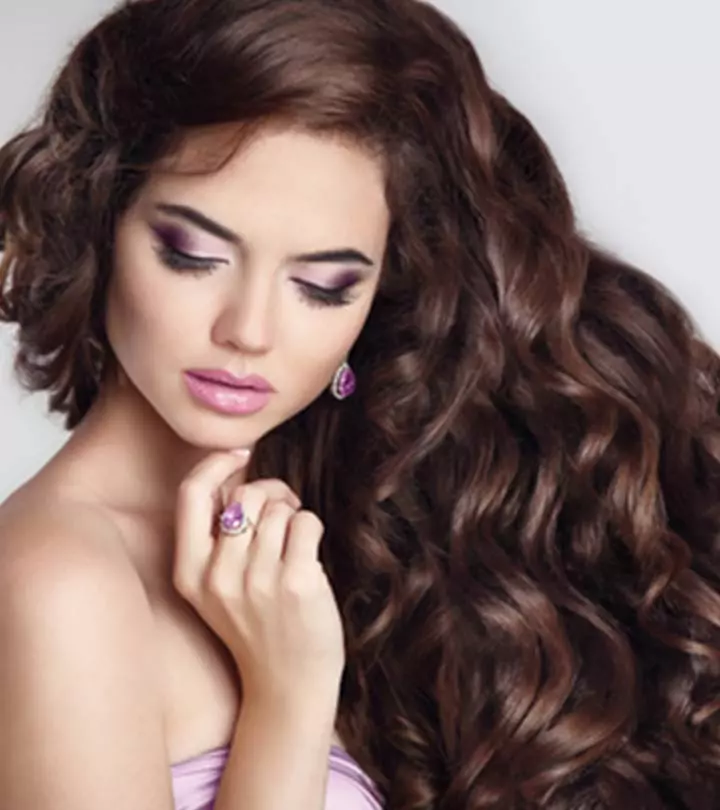
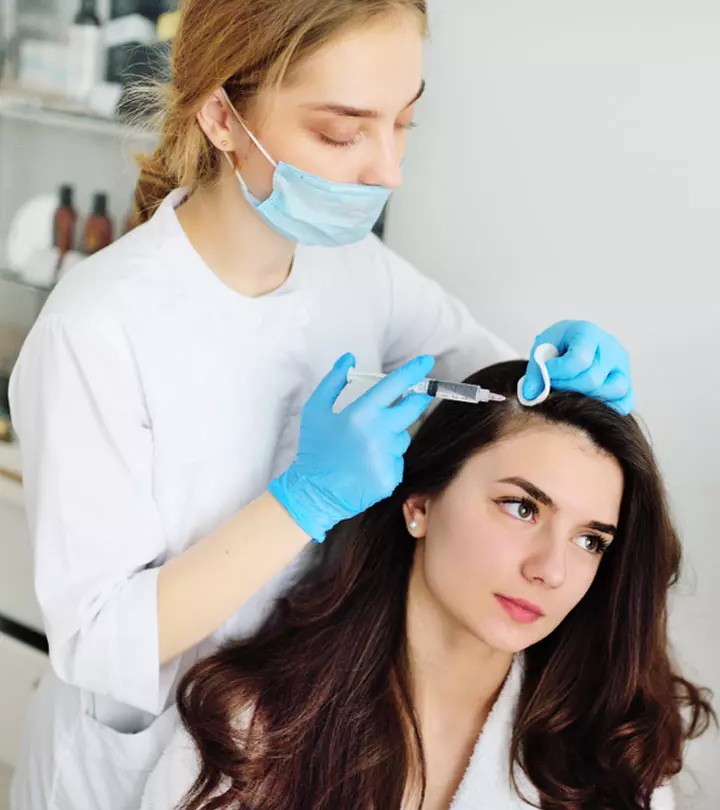
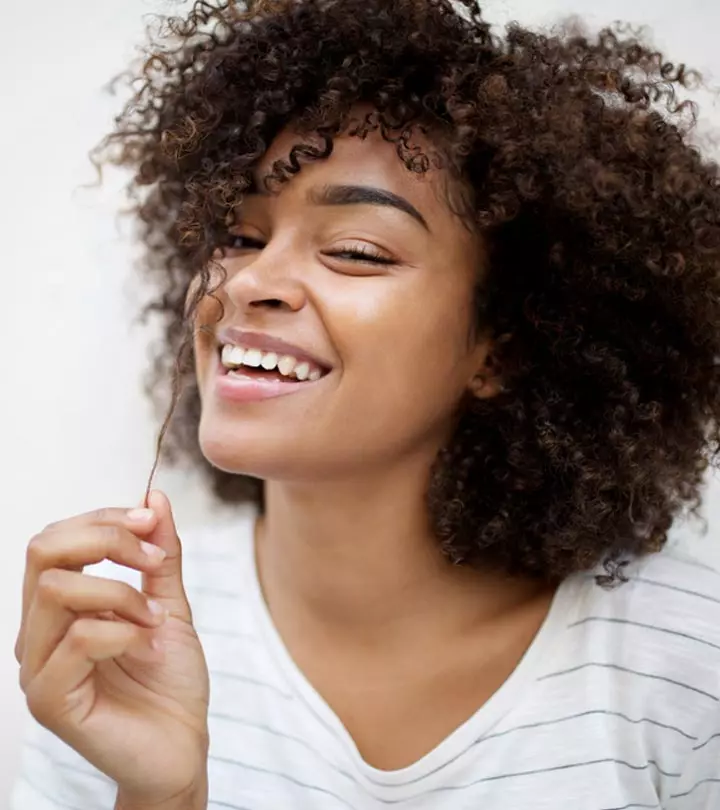
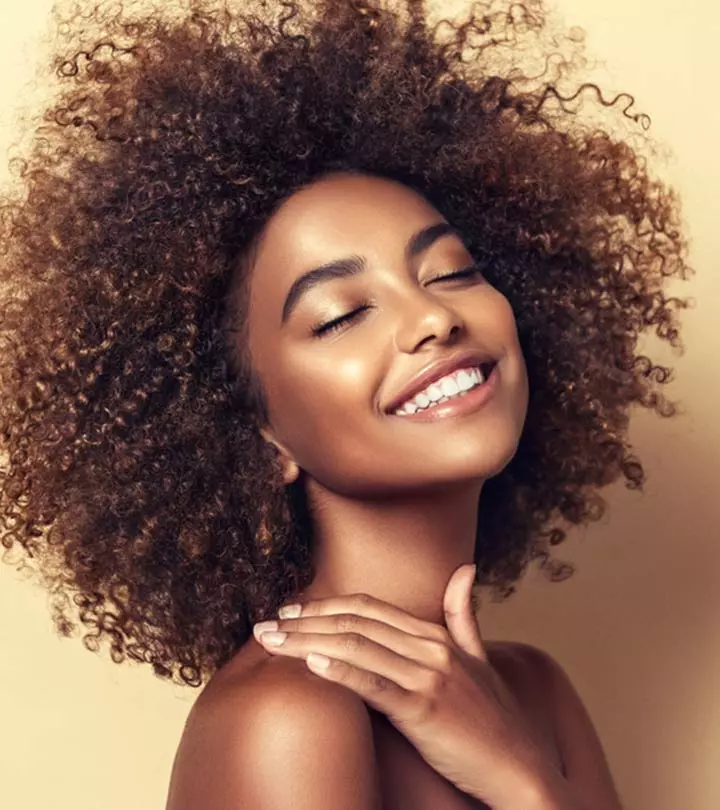

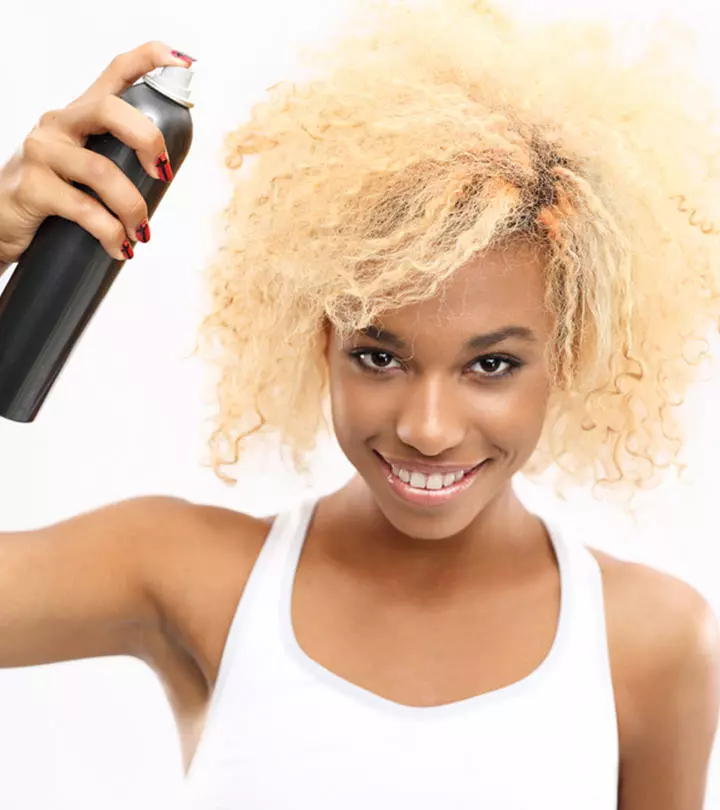

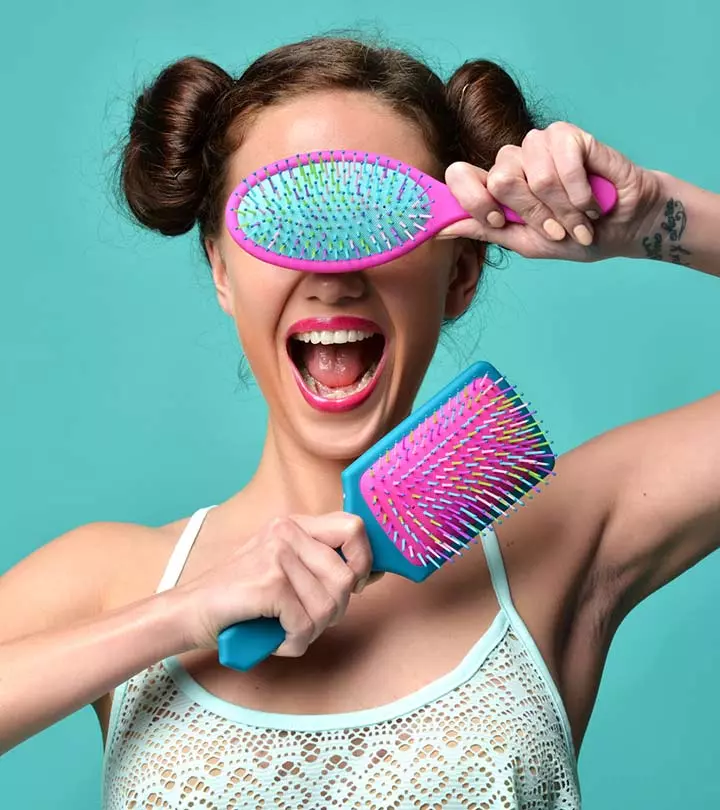
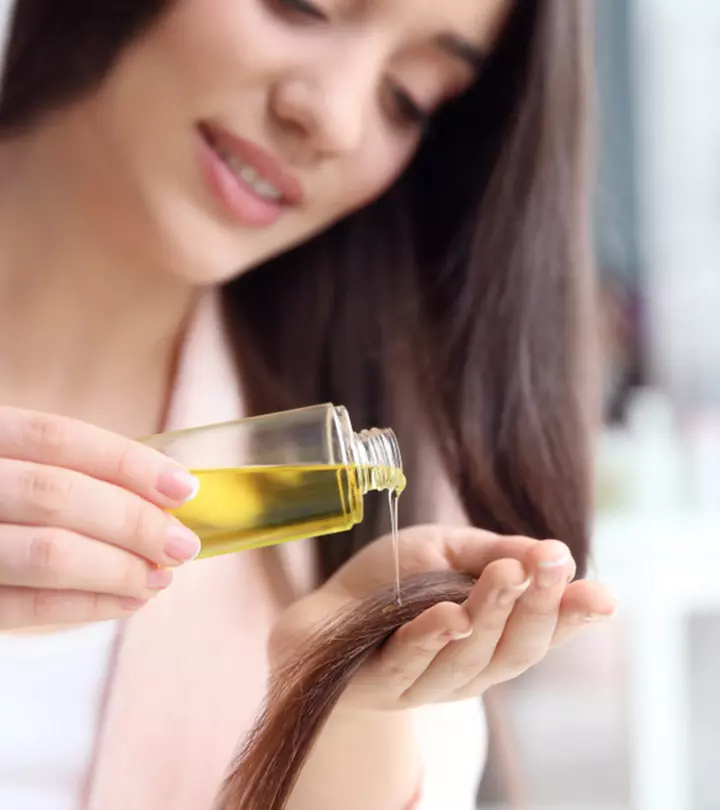



Community Experiences
Join the conversation and become a part of our empowering community! Share your stories, experiences, and insights to connect with other beauty, lifestyle, and health enthusiasts.